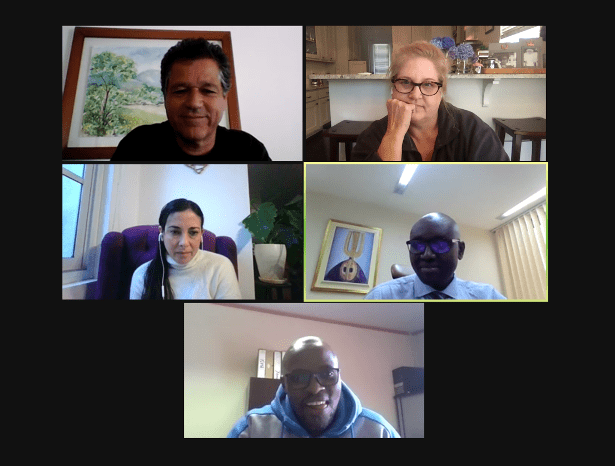Guest blog by Delery Rice, IPP 2021
The COVID pandemic offered many challenges and horrible outcomes for so many people across the world. If I find myself searching for anything that resembles a positive result produced over the last two years, I would undoubtedly pick my experience with Harvard Kennedy School’s Implementing Public Policy (IPP) course. Without the advantage of the online learning structure of the class, navigating this course while working in the public sector, raising four boys, and the rest of life’s time-consuming requirements would likely have proven impossible. So, armed with all of the time management skills I could muster, I began this journey. It proved to be so much more than I expected, and I am forever grateful to have had this experience.
Working with students from 38 different countries and different professions provided a unique experience. They showcased, in particular, that we all strive for a similar goal – the betterment of our countries/states and their people. The small group experience provided a working atmosphere that fostered cohesion and moved us all to work through the problem using the iterative steps we had learned. While learning the steps and applications of the Problem Drive Iterative Adaptation (PDIA) process, the IPP course provided insights to apply to our chosen problem while offering in-depth looks at case studies that showcase how this process brings alternatives to addressing issues. Each week, we met to discuss our progress, how the discovery process changed the focus of our problem, and the direction we now would take to progress toward solutions or betterment.
The PDIA toolkit states, “Problem Driven Iterative Adaptation (PDIA), is a step-by-step approach which helps you break down your problems into their root causes, identify entry points, search for possible solutions, take action, reflect upon what you have learned, adapt and then act again.” Following the PDIA process opened avenues that students may not have navigated before working through the steps. In this blog, I have summarized the PDIA steps and what I learned while moving through them.
1. Identify Entry Points (or…Fishbones are my nemesis)
Creating a fishbone diagram, as first developed by Ishikawa in the 1960s, almost felt like torture sometimes. The purpose of creating and reworking a fishbone diagram is to break down a problem into root causes that may contribute to a problem or an undesirable outcome of a particular problem. If following the steps of PDIA, the fishbone diagram will reveal entry points to address a problem or possibly a change in the actual statement that defines a problem. Over the weeks of this course, by fishbone, at times, was an incoherent mess. But talking through the iterations with my small group provided direction and insights that were difficult to see independently.
2. Search for Possible Solutions (yes, you must invite the people who see things differently to the table)
This step provided an area of growth that often gets lost when choosing sides. Bringing authorizers from all points of view to the table creates a space where right or wrong may not exist. Stakeholders invested in a problem, whether the authority charged with solving it or the person downline experiencing it, may not often agree on solutions. Bringing all participants to work on solutions offers views that may not necessarily see while looking downline or inversely while looking upline. It is quite possible that a consensus on every point might not happen, but knowing all of the perceived solutions offers a more greatly informed process than working with only one or two views coming from the same direction.
3. Take Action (quite possibly my favorite step)
Those who have worked with me come to know quickly that action steps are high on my priority list when working through problems. Meeting and talking without acting can provide frustration and a lack of progress. Thoughtfully working through the PDIA process offers opportunities to try out solutions early on. Each entry point identified in step one can offer a way to act and test the result or direction an iteration may produce. Testing these solutions through actions can quickly determine if things are moving in the right direction and provide a glimpse of course correction, if necessary.
4. Reflect (with a clearer viewpoint)
Meeting regularly with people having authority over a specific problem allows reflection on progress. Including all stakeholders in this reflection process is key to gaining a clear understanding of progress so far. Additionally, asking those already in the room to recommend someone else who may have differing views provides layers of insight to measure if the team is moving in the right direction. Pausing to reflect at this point and each meeting in the future keeps the process honest.
5. Adapt and Act Again (no one likes change, but it has to happen)
The best approach is when facing a surmountable problem, knowing that all the solutions will probably not happen in the first iteration. Giving the team space to move and change direction is tantamount to providing eventual solutions and ultimately defining success. Creating an atmosphere within a group that fosters admitting when something is not working is much better than wasting everyone’s time to develop a solution that revealed it would not work early in the process. Being able to admit that each authorizer brings a different experience to the group that helps forge the pathway to solutions will ultimately serve the greater good.

The PDIA Process
My employment with the State of Louisiana, USA, allows me to work on some of the many challenges our state faces – and has faced for decades or more. Choosing one problem to bring to this class presented a challenge in and of itself. Working in public service can seem frustrating when so many issues need attention, each being as important as the next. My classmates’ support and empathy proved to be valuable assets while mulling through problem-solving to implement public policy. Although our chosen problems all differed significantly, working each week to find solutions provided yet another way we all are more similar than we credit ourselves to be. I am forever grateful for the experience gained in this class, but even more so for the relationships created by working together to make the world a better place – one PDIA process at a time.

Delery Rice’s Working Group
This is a blog series written by the alumni of the Implementing Public Policy Executive Education Program at the Harvard Kennedy School. Participants successfully completed this 6-month online learning course in 2021. These are their learning journey stories.
